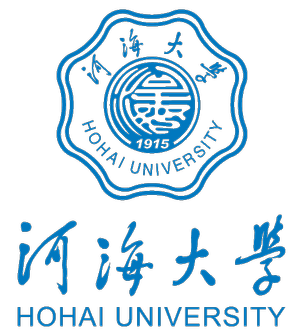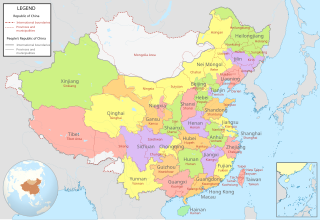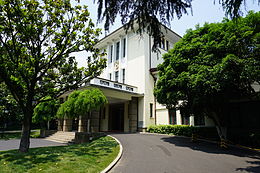
Nanjing, alternatively romanized as Nanking, is the capital of Jiangsu province of the People's Republic of China. It is a sub-provincial city, and a megacity. The city has 11 districts, an administrative area of 6,600 km2 (2,500 sq mi), and a population of 9,423,400 as of 2021. Situated in the Yangtze River Delta region, Nanjing has a prominent place in Chinese history and culture, having served as the capital of various Chinese dynasties, kingdoms and republican governments dating from the 3rd century to 1949, and has thus long been a major center of culture, education, research, politics, economy, transport networks and tourism, being the home to one of the world's largest inland ports. The city is also one of the fifteen sub-provincial cities in the People's Republic of China's administrative structure, enjoying jurisdictional and economic autonomy only slightly less than that of a province. Nanjing has been ranked seventh in the evaluation of "Cities with Strongest Comprehensive Strength" issued by the National Statistics Bureau, and second in the evaluation of cities with most sustainable development potential in the Yangtze River Delta. It has also been awarded the title of 2008 Habitat Scroll of Honor of China, Special UN Habitat Scroll of Honor Award and National Civilized City. Nanjing is also considered a Beta city classification, together with Chongqing, Hangzhou and Tianjin by the Globalization and World Cities Research Network, and ranked as one of the world's top 100 cities in the Global Financial Centres Index.

Jiangsu is an eastern coastal province of the People's Republic of China. It is one of the leading provinces in finance, education, technology, and tourism, with its capital in Nanjing. Jiangsu is the third smallest, but the fifth most populous and the most densely populated of the 23 provinces of the People's Republic of China. Jiangsu has the highest GDP per capita and second-highest GDP of Chinese provinces, after Guangdong. Jiangsu borders Shandong in the north, Anhui to the west, and Zhejiang and Shanghai to the south. Jiangsu has a coastline of over 1,000 kilometers (620 mi) along the Yellow Sea, and the Yangtze River passes through the southern part of the province.

Chongqing is a major city in the People's Republic of China. Chongqing is a connection in the Yangtze River Economic Belt and a base for China's Belt and Road Initiative.

Wuxi is a city in southern Jiangsu province, eastern China, 135 kilometers (84 mi) by car to the northwest of downtown Shanghai, between Changzhou and Suzhou, and one of the central cities in the Yangtze River Delta. It is the ancient founding capital of the state of Wu, The birthplace of Wu culture. As of the 2020 census, the city had a total population of 7,462,135 inhabitants.

Zhenjiang, alternately romanized as Chinkiang, is a prefecture-level city in Jiangsu Province, China. It lies on the southern bank of the Yangtze River near its intersection with the Grand Canal. It is opposite Yangzhou and between Nanjing and Changzhou. Zhenjiang was formerly the provincial capital of Jiangsu and remains as an important transportation hub. As of the 2020 census, its total population was 3,210,418 inhabitants whom 1,266,790 lived in the built-up area made of the 3 urban districts. The town is best known both in China and abroad for Chinkiang vinegar, a fragrant black vinegar that is a staple of Chinese cooking.

Nanjing Normal University is a provincial public university in Nanjing, Jiangsu, China. It is affiliated with the Province of Jiangsu, and co-sponsored by the Ministry of Education and the provincial government. The university is part of the Double First Class University Plan and Project 211.

Changzhou is a prefecture-level city in southern Jiangsu, China. It was previously known as Yanling, Lanling, and Jinling. Located on the southern bank of the Yangtze River, Changzhou borders the provincial capital of Nanjing to the west, Zhenjiang to the northwest, Wuxi to the east, and the province of Zhejiang to the south. Changzhou is located in the highly developed Yangtze Delta region of China extending from Shanghai going northwest. The population of the Changzhou Municipality was 5,278,121 at the 2020 census. The city is the birthplace of Zhou Youguang who created the pinyin romanization system.
The Southwestern University of Finance and Economics is a national public finance and economics university in Chengdu, Sichuan, China. It is affiliated with the Ministry of Education, and co-sponsored with the Sichuan Provincial People's Government. The university is part of Project 211 and the Double First Class University Plan.

Hohai University is a public university in Nanjing, Jiangsu, China. It is affiliated with the Ministry of Education of China, and co-sponsored by the Ministry of Education, the Ministry of Water Resources, the State Oceanic Administration, and the Jiangsu Provincial People's Government. The university is part of Project 211 and the Double First Class University Plan.

The Presidential Palace in Nanjing, Jiangsu, China, housed the Office of the President of the Republic of China from 1927 until the capital was relocated to Taipei in 1949. It is now a museum called the China Modern History Museum. It is located at No.292 Changjiang Road, in the Xuanwu District of Nanjing.

Nanjing Library is the third-largest library in China with over 10 million items. It houses important scientific, cultural and arts literature relating to Jiangsu province and other national historical records such as ancient Chinese and foreign publications. As located in the ancient capital Nanjing, the library contains 1.6 million ancient books and 100,000 volumes of books, documents and manuscripts dating from the Tang dynasty to the Ming dynasty.

Nanjing University is a public university in Nanjing, Jiangsu, China. It is affiliated and sponsored by the Ministry of Education. The university is part of Project 211, Project 985, and the Double First Class University Plan.

A direct-administered municipality is a city in China directly governed by the central government and not part of a province, with its leader appointed by the State Council. There are four municipalities in China: Beijing, Tianjin, Shanghai, and Chongqing.

The Shanghai–Chengdu Expressway, designated as G42 and commonly referred to as the Hurong Expressway is an east–west bound expressway that connects the eastern metropolis of Shanghai to Chengdu, the capital city of Sichuan. The expressway passes through six provinces and serves major cities such as Suzhou, Wuxi, Changzhou, Nanjing, Hefei, Wuhan, and Yichang. The eastern terminus of G42 is at the Wuning Road Interchange of Shanghai Middle Ring Road. At its western terminus, the expressway intersects the East 3rd Ring Road and connects East Erxianqiao Road in Chenghua District, Chengdu. The expressway spans 1,960 km (1,220 mi) in length.

The Consulate General of the United States in Shanghai is one of the six American diplomatic and consular posts in the People's Republic of China.

The Consulate General of United States, Guangzhou is one of seven American diplomatic and consular posts in China. It is one of America's earliest diplomatic posts in the Far East. The consulate serves the South China region, covering the provinces of Guangdong, Hainan and Fujian, and the Guangxi Zhuang Autonomous Region, an area which, according to the latest census in 2020, has a resident population of over 220 million. The consulate general is also the only U.S. mission in Mainland China to process American adoptions and immigrant visas, making it one of the U.S. Department of State’s busiest consular-related posts.

The history of the administrative divisions of China after 1949 refers to the administrative divisions under the People's Republic of China. In 1949, the communist forces initially held scattered fragments of China at the start of the Chinese Civil War. By late 1949, they controlled the majority of mainland China, forcing the Republic of China government to relocate to Taiwan.

Librairie Avant-Garde is a bookstore opened by Qian Xiaohua in 2004, now regarded as the most representative bookstore in Nanjing, China. It has become a cultural icon of the city, and because of the adjacency to Nanjing University and the popularity among students, it is dubbed as "the second library of Nanjing University".

Chen Qiaonian was a Chinese revolutionary and early leader of the Communist Party.

















